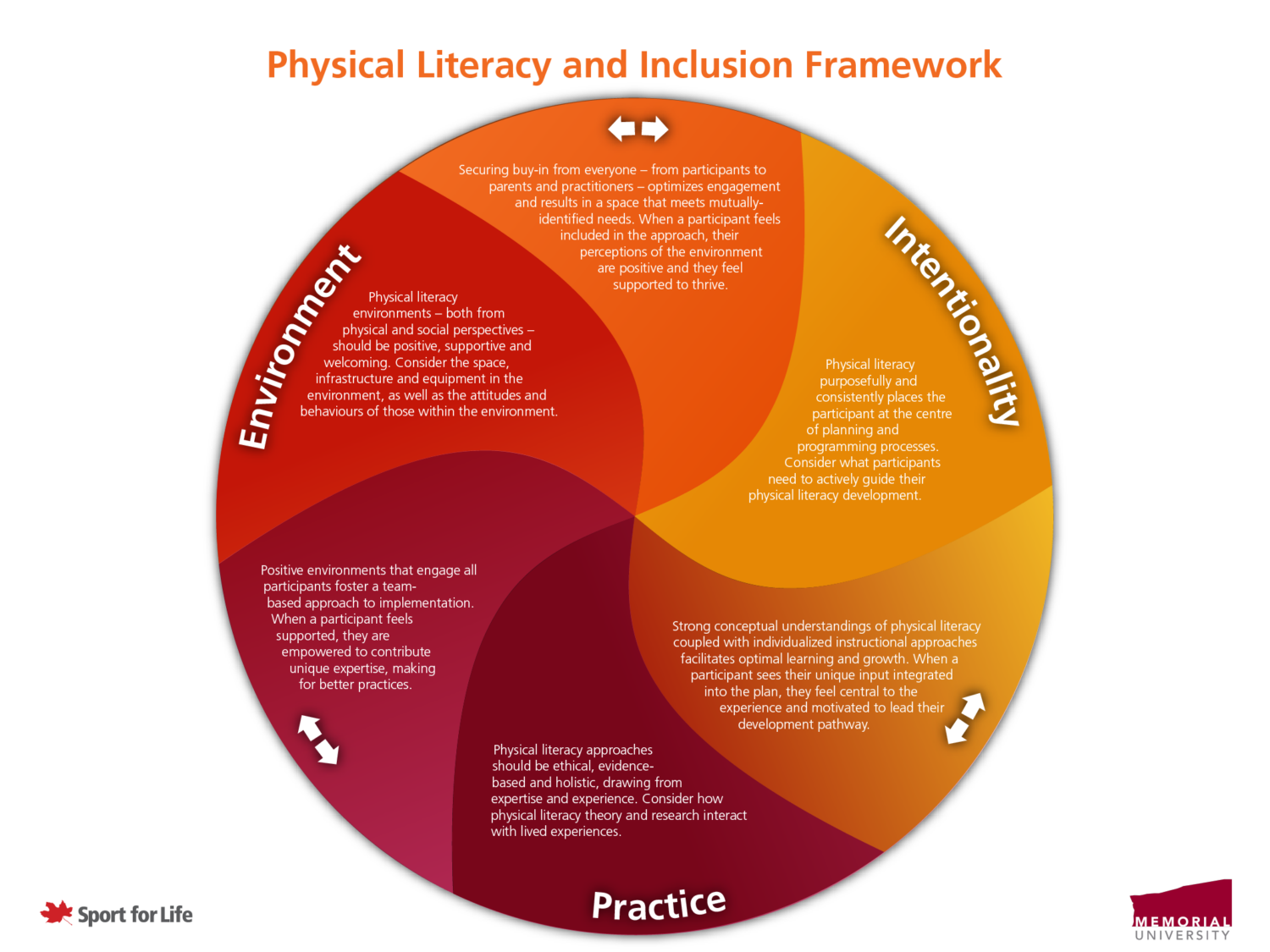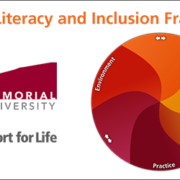Pillars to physical literacy and inclusion: Foster an abilities-based approach to the execution of programs, building on individual strengths and encouraging a positive and motivational climate toward activity. Recognize and respect embodied capability
Many programs have implemented physical literacy (PL) but often overlook the experiences of persons with diverse abilities due to societal, cultural, and political influences. This can lead to exclusion and marginalization from physical activities. Researchers at Memorial University have addressed this challenge by developing a PL and inclusion framework through direct observation of programming and perspectives from participants of diverse abilities, parents, practitioners, and program administrators. The framework and its three pillars of environment, practice and intentionality offer one lens to support the development of current and future inclusive physical literacy programs.

This blog series will discuss the ten evidence-based best practices for the inclusion of persons with diverse abilities in programming suggested within their research findings. From holistic design to systems of support and everything in between, find out how to foster inclusion in your programs.
Idealization: Foster an abilities-based approach to the execution of programs, building on individual strengths and encouraging a positive and motivational climate toward activity. Recognize and respect embodied capability.
An abilities-based approach focuses on recognizing and developing individual strengths and skills in physical activities, emphasizing inclusivity and continuous improvement. It tailors activities to suit each person’s abilities and fosters a positive and motivational climate, promoting lifelong engagement in physical activity.
Putting into practice
Meet Quinn, a community-based recreation practitioner who leads an inclusive dance program for participants of all abilities, including those experiencing disabilities. Quinn’s approach focuses on celebrating each participant’s unique strengths and fostering a positive and motivational climate towards physical activity.
At the start of the dance program, Quinn conducts a strengths assessment for each participant. They consider each participant’s physical abilities, coordination, and dance preferences. Quinn schedules one-on-one meetings with participants and their families to understand their strengths and interests. This assessment helps them design a program highlighting participant ability and ensuring everyone can participate actively.
Quinn creates dance routines that can be adapted to various abilities. They incorporate movements that participants excel at and enjoy while maintaining an inclusive atmosphere. Quinn observes each participant’s progress during dance sessions and adjusts choreography as needed. For example, participants with excellent arm coordination but limited leg mobility include expressive arm movements in the routine.
Quinn uses positive reinforcement and encouragement to boost participants’ self-confidence. They acknowledge participant progress and celebrate even small achievements. Quinn regularly praises participants for their efforts and achievements during dance sessions. They create a supportive atmosphere where participants feel valued for their contributions, fostering a sense of accomplishment and motivation.
Quinn ensures that the dance studio and equipment are accessible to all participants. They provide adaptive tools and props, such as dance chairs or sensory-friendly lighting, to accommodate diverse needs. Quinn collaborates with accessibility experts to make necessary modifications to the dance studio. She also seeks input from participants and their families to ensure a comfortable and inclusive environment.
Through Quinn’s abilities-based approach and emphasis on celebrating individual strengths, participants in the dance program not only engage in physical activity for the long term but also develop a positive self-image and a love for dance. The program becomes a supportive community where each participant’s embodied capabilities are respected and celebrated. This example demonstrates how a community-based recreation practitioner can ensure the principle of fostering an abilities-based approach to programs, building on individual strengths, and encouraging a positive and motivational climate toward physical activity while recognizing and respecting embodied capability.
Tangible takeaways
Here are five recommendations to foster an abilities-based approach and create a positive and motivational environment for activity:
- Participant-centred Observations: Conduct participant-centred observations to understand each participant’s unique abilities, strengths, and areas for growth. Tailoring program activities to individual capabilities ensures participants feel valued and supported in their physical literacy journey.
- Strengths-Based Programming: Design program activities focusing on participants’ strengths and interests. Emphasizing the positive aspects of each individual’s abilities allows them to excel and gain confidence in their physical pursuits.
- Encouraging Mindset and Positive Reinforcement: Foster an encouraging and positive mindset among staff and participants. Celebrate effort, progress, and achievements, reinforcing a motivational climate that values personal growth and development.
- Mixed-Ability Grouping: Organize mixed-ability groupings within programs to promote peer support and mentorship. Participants with varying abilities can learn from one another, and this collaborative environment fosters mutual understanding and respect.
- Continuous Learning and Professional Development: Invest in continuous learning and professional development for program staff to enhance their knowledge and skills in promoting an abilities-based approach. Equipping staff with the tools to support participants effectively is crucial in building a positive and empowering climate.
By implementing these recommendations, organizations can cultivate an environment where participants have the freedom to make choices, explore activities actively, and feel empowered to shape their physical literacy journey according to their unique needs and desires. This approach aligns with Sport for Life principles and fosters inclusive physical literacy experiences that cater to the diverse aspirations of all participants.
This article is one of a series of posts on the Sport for Life website based on the research conducted by Drs. Kyle Pushkarenko and Jeff Crane of Memorial University. Keep an eye on our blog for information on the ten suggested best practices and ways to take action around them over the coming months.

